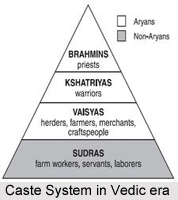 Vedic civilisation followed the Indus Valley Civilisation. Previously some western historians denoted the Vedic people were barbarous and that they devastated the earlier civilisation and built up their own. Now the modern research proved that Vedic civilization was diminished not by the external aggression but by the frequent flood and other natural disaster at that time. It was proved by Kenneth Kennedy in the year 1994. After this examination the debate regarding the decline of Indus Valley Civilisation curtained and also proved wrong of the previous research done by Sir Mortimer Wheeler who stated that Indus Valley civilization ended in the massive aggression. He stated it while he discovered a group of 37 skeletons found in various parts of Mohenjo-Daro, and passages in the Vedas referring to battles and forts. Others are of the opinion that the Vedic people were highly civilised, and that they absorbed the earlier inhabitants into the Aryan fold and drove away the rebels. Scholars are usually of the opinion that the Aryans migrated from Central Asia through Persia and settled in the fertile land watered by the Indus. Gradually they spread towards the east. They encountered stiff resistance from the Dravidians of the south where they penetrated with difficulty.
Vedic civilisation followed the Indus Valley Civilisation. Previously some western historians denoted the Vedic people were barbarous and that they devastated the earlier civilisation and built up their own. Now the modern research proved that Vedic civilization was diminished not by the external aggression but by the frequent flood and other natural disaster at that time. It was proved by Kenneth Kennedy in the year 1994. After this examination the debate regarding the decline of Indus Valley Civilisation curtained and also proved wrong of the previous research done by Sir Mortimer Wheeler who stated that Indus Valley civilization ended in the massive aggression. He stated it while he discovered a group of 37 skeletons found in various parts of Mohenjo-Daro, and passages in the Vedas referring to battles and forts. Others are of the opinion that the Vedic people were highly civilised, and that they absorbed the earlier inhabitants into the Aryan fold and drove away the rebels. Scholars are usually of the opinion that the Aryans migrated from Central Asia through Persia and settled in the fertile land watered by the Indus. Gradually they spread towards the east. They encountered stiff resistance from the Dravidians of the south where they penetrated with difficulty.
In India, a completely new culture and civilisation emerged during the 1500 BC - 600 BC. The country had been an observer of the several developments of culture and society since the early Bronze Age. The popularly known urban civilisation of Indus Valley collapsed due to several features including various foreign invasions. Historians view that with the coming of the Aryans, the Indus and Harappan culture ruined. The age of the Aryans are termed as the Vedic Period. The Aryans entered India from Central Asia through the Khyber Pass between B.C. 2000 and B.C. 1500. They introduced their own culture and religion. The social status of the Aryans, on the contrary, to the Indus Valley civilisation was rural culture. The era was also popularly identified as the Vedic Period because the four Vedas formed the very essence of the age. There are four Vedas namely Rig Veda, Sama Veda, Yajur Veda and Atharva Veda which form the main literary sources for this Vedic era. The period of Vedas is divided into two parts namely the Early Vedic period which starts from B.C. 2000 and continued till B.C. 1000. The Later Vedic Civilisation forms the age from B.C. 1000 to B.C. 600. The evolution of the later Vedic period from the early Vedic period was manifested by the development of agriculture as the main economic activity of the people. It led to the emergence of a more settled social life and a subsequent decline in the importance of cattle rearing.
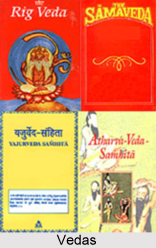 History of Vedic Civilisation
History of Vedic Civilisation
Civilisation of a period refers to the mechanisms, techniques and the devices by which individuals live their life and India has remained an abode to a number of civilisations which have left remarkable influence in the Indian society. The Vedic Civilisation has been the core of Indian life and has contributed to the Indian soil in end number of ways. The Vedic Period started in the 2nd millennium BC and ended at around 600 BC. It is the Vedic literature or the four Vedas that has actually contributed to the classification of the Vedic Civilisation. However, not much is known about the origin of the Vedic Civilisation but according to the Rig Veda, the Aryans of Central Asia invaded India and started a new way of life which was completely different from the Indus Valley Civilization. Thus, it can be said that the Vedic era ushered in with the coming of the Aryans.
The Aryans, in their expansion in the different regions of India, met with tough opposition by the earlier non-Aryan settlers. Those who submitted to them were admitted into the Aryan fold. They appear to have been employed as dasas (servants or slaves). That the Aryans spread far in the east is proved by the mention of the tiger, dwelling in the Gangetic valley, in the Atharva Veda which is believed to be later than the Rig Veda. The Vedic family was patriarchal. The government was monarchical. The tribal chiefs used to govern the respective tribes. In the upper strata of the society people used to perform sacrifices. Material prosperity and happiness were desired by the people. Male and female servants, good houses, good children etc. were some of the elements the Vedic Aryan aspired to have.
Society in Vedic Civilisation
The society during the Vedic Civilisation was patriarchal in nature. Women were subjugated both inside and outside the houses. Family structures were strictly patrilineal. The Vedic people generally practiced the concept of joint families. At the same time a positive aspect of this period was that the girls got the opportunity to educate themselves. It is true that girls got the opportunity to seek education but the education of sons was more important for fathers. Every father was much concerned about the intellectual achievements of their sons and took steps to initiate them to the Vedic literature. Getting introduced to the Vedic literatures as well as to the family crafts was very vital for every boy of the Vedic period. Early Aryans were familiar with distinctions based merely on skin colour but in the later period of the Vedic Civilisation there were distinctions of classes. The four classes which were part of the Vedic society were the Brahmins, Kshatriyas, Vaishya and the Sudras and there were certain boundaries with regard to professions. A method of ashram system prevailed in the Vedic era. Four ashrams of Vedic Life were included and it was done with a view to offer proper ideas on both Karma and Dharma. The ashrams of the Vedic society are categorised as Brahmacharya, Grihastha, Vanaprastha and Sannyasa.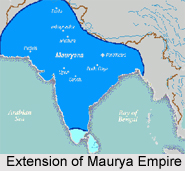
The fact that caste system was not present in the Vedic society can be well understood because it was customary for all boys and girls of the Vedic era to undergo the ceremony of `upanayana`, unlike the present age where only a particular class of the society practices the thread ceremony. In the Vedic Age, like boys, the girls also had to lead a life of brahmachari. Hence, there was not much difference in the treatment of girls and boys during the Vedic period. Social life in Rig Vedic Civilization was characterised by a nomadic lifestyle. However, the later Vedic Civilization was quite different and developed. The later Vedic Period came to be known as the Epic Age. Social life during the later Vedic period included large self-sustained settlements, fortified and protected by warriors.
Culture in Vedic Civilisation
Vedic civilisation can be identified as an associated culture. This culture mainly inhabited the northern and north-western parts of the Indian subcontinent. Vedic Literature which was mainly the Vedic Samhitas or the Mantras and the metric texts emerged during the Vedic period. As far as Vedic literature is concerned, poetry played a significant role and testimonies to this were the four Vedas which are a collection of poems, namely, the Rig Veda, Sama Veda, Yajur Veda and the Atharva Veda. The Vedic literatures are the earliest forms of literary works in India. It consists of the Samhitas, the Brahmanas, the Upanishads and the Aryanakas. These forms of Vedic literature till today are held in high esteem by the Indians especially the Hindus. During this period even music was much developed. Various musical instruments were used to produce melodious tones and the beautiful music was accompanied by skilled dance performances. Apart from the artistic accomplishments, the Vedic Civilisation is well known for the ancient Ayurveda which stands as a heritage of India today. The practice of using nature as a system of healing and rejuvenation is as old as the Vedic Civilisation itself. Even recently elements from the ancient Ayurveda are being used to cure certain diseases of both the mind and the body. It was during this period that the Sanskrit literature flourished too.
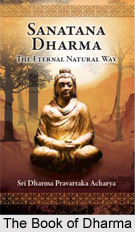 With regard to the eating habits of the Aryans, milk, fruits and vegetables constituted an important part. The consumption of meat was also part of the Vedic life and here it should be noted that vegetarianism was infused into Indian life long after the Vedic Civilisation. With regard to the eating habits of the Aryans, milk, fruits and vegetables constituted an important part. The consumption of meat was also part of the Vedic life and here it should be noted that vegetarianism was infused into Indian life long after the Vedic Civilisation. The costumes worn by the people of the Vedic period were generally made of sheep`s wool or goat`s hair. The dresses worn by the people had three parts namely the undergarment, a proper garment upon the undergarment and a cloak or an over garment. Both men and women used turbans during this era. Interestingly the people of the Vedic age were very enthusiastic about ornaments.
With regard to the eating habits of the Aryans, milk, fruits and vegetables constituted an important part. The consumption of meat was also part of the Vedic life and here it should be noted that vegetarianism was infused into Indian life long after the Vedic Civilisation. With regard to the eating habits of the Aryans, milk, fruits and vegetables constituted an important part. The consumption of meat was also part of the Vedic life and here it should be noted that vegetarianism was infused into Indian life long after the Vedic Civilisation. The costumes worn by the people of the Vedic period were generally made of sheep`s wool or goat`s hair. The dresses worn by the people had three parts namely the undergarment, a proper garment upon the undergarment and a cloak or an over garment. Both men and women used turbans during this era. Interestingly the people of the Vedic age were very enthusiastic about ornaments.
Religion in Vedic Civilisation
One of the important elements of Vedic culture was its religion. Vedic Period saw the upsurge of monolithic religion. The Vedic Religion is the predecessor to modern Hinduism. Whilst early Vedic religion stressed on nature worship, the Later Vedic civilisation witnessed the development of Hinduism. The importance of Nature was generous during the early Vedic era and needless to spell out, the Aryans were nature worshippers. The elements of nature like the earth, wind and the sun were personified and were worshipped as deities. The Aryans performed religious rituals through sacrifices and chanting of verses. During the Vedic Civilisation the religion was iconic in nature and the concept of Moksha or salvation was non-existent. During the late Vedic period religious practices changed and moved towards Hinduism. The people of the Later Vedic Period had started worshipping deities like the Pashupati, Prajapati and Lord Krishna. Not only that but also they started believing in the concepts of karma and moksha based on which Hinduism gradually developed.
Administration in Vedic Civilisation
Along with the Vedic Civilisation came in new ways that were still then unknown to the Indian life. For instance an important constituent of the Vedic Civilisation was hierarchy in the society. The king was the supreme ruler of the society who ruled the state and his duty was to protect his subjects. Under the king, the others who ruled the smaller units of the society was the jyestha who ruled the gana and more importantly were the gramani and the vispati who took care of the grama and the vis respectively. The grama and the vis were the two different political structures of the Aryan society and most probably the grama was the smallest social unit of the Vedic society. The political structure of the Aryans had sabhas and samitis as important councils. The king on the other hand was advised by the purohits (chaplains) and the senani (army chief). The purohits or priests during that time not only advised the king but also performed all religious rites for the supreme ruler.
Economy in Vedic Civilisation
The primary occupations of the people during the Vedic Civilisation were essentially agriculture and cattle rearing. During the early stages, as the Aryans led a wandering life, cattle rearing were of more importance to them as an occupation. In the later period when they had started leading a settled life agriculture gained more importance and it became the way of their subsistence. Cattle rearing being an important way of life, the cow held an important position in the lives of the Vedic people. 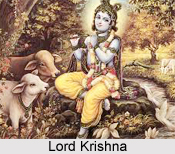 Apart from cattle rearing cows were often used as a means of exchange as the concept of coins was not in vogue during that time.
Apart from cattle rearing cows were often used as a means of exchange as the concept of coins was not in vogue during that time.
A number of elements of the Vedic way of life have been incorporated in the Hindu life styles. The Vedic Civilisation can be termed modern from a number of angles. It was not only modern in its outlook but at the same time it was aesthetically enriched. It is the Vedic Civilisation that has given India its most ancient form of literature in the form of four Vedas. The Vedic Civilisation had given rise to a number of legendary kingdoms in the soil of India like the Maurya Empire. The Vedic period saw the rise of various civilizations and cultures. This period also saw the rise of the Sixteen Mahajanapadas. The Vedic Civilisation, thus, can be called a cornerstone of Hindu philosophy.






































